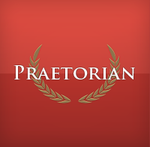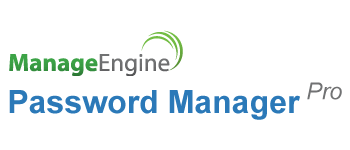Description

WhiteSource

Praetorian
Comprehensive Overview: WhiteSource vs Praetorian
WhiteSource (now known as Mend):
a) Primary Functions and Target Markets:
- Primary Functions: Mend focuses on open-source security and compliance management. The platform continuously scans an organization's open-source components for vulnerabilities and licensing issues, providing automated remediation suggestions. It integrates with various development tools and processes to ensure real-time security throughout the software development lifecycle.
- Target Markets: Mend primarily targets enterprises and organizations that heavily use open-source software. This includes sectors like software development, technology, finance, and telecommunications, where software security and compliance are critical.
b) Market Share and User Base:
- Mend (WhiteSource) is a significant player in the open-source security market. While exact market share numbers fluctuate, it competes closely with other tools like Snyk and Black Duck. It has a substantial user base, particularly among larger enterprises and organizations committed to DevSecOps practices.
c) Key Differentiating Factors:
- Mend is well-regarded for its extensive vulnerability database and the depth of its scanning capabilities, which offer thorough insights into potential security risks.
- It emphasizes integration into existing development processes with minimal disruption, offering native integrations with numerous development and CI/CD tools.
- Mend also focuses on automation, not only in identifying vulnerabilities but also in automating the remediation process, which can significantly enhance developer productivity and security posture.
Praetorian:
a) Primary Functions and Target Markets:
- Primary Functions: Praetorian specializes in cybersecurity consulting and solutions, offering services such as penetration testing, adversarial simulations, and security assessments. They provide a breadth of security expertise tailored to identify and mitigate threats across an organization's entire IT landscape.
- Target Markets: Praetorian targets organizations across various industries, including technology, finance, healthcare, and government, serving any entity that requires robust cybersecurity assurance and consultancy.
b) Market Share and User Base:
- As a consultancy, Praetorian's market share is not as readily quantifiable as software providers. However, the company is recognized as a leading advisory firm with a strong reputation for expertise in cybersecurity. It has worked with numerous high-profile clients needing advanced security consulting services.
c) Key Differentiating Factors:
- Praetorian's strength lies in its advisory services, where it provides highly customized and detailed security assessments tailored to each client's specific needs and threat landscape.
- It combines offensive security services with strategic advisory to deliver comprehensive solutions that protect not only against current threats but also prepare for future risks.
- Praetorian's approach is more service-oriented, focusing on leveraging human expertise and experience rather than solely relying on software solutions. This sets it apart from tool-based security offerings, focusing instead on in-depth, strategic security guidance and action plans.
Comparison and Differentiation Between Mend and Praetorian:
- Nature of Offerings: Mend (WhiteSource) provides a product-focused solution with its open-source security platform, whereas Praetorian offers service-focused expertise in cybersecurity, emphasizing consultancy and custom security solutions.
- Target Audience Needs: Mend is ideal for organizations looking to integrate automated security solutions directly into their development processes, with a strong emphasis on continuous monitoring and remediation. In contrast, Praetorian is suited for businesses seeking customized security advice and penetration testing that addresses broader security strategies and challenges beyond open-source components.
- Approach to Security: Mend automates vulnerability management to enhance efficiency in dealing with open-source software risks, aiming for seamless integration into development pipelines. Praetorian, meanwhile, offers strategic insights and in-depth assessments, focusing on holistic security strategies encompassing a wider range of security concerns.
Contact Info

Year founded :
Not Available
Not Available
Not Available
Not Available
Not Available

Year founded :
2010
Not Available
Not Available
United States
Not Available
Feature Similarity Breakdown: WhiteSource, Praetorian
When comparing WhiteSource (now known as Mend) and Praetorian, it's important to note that both solutions offer capabilities in the realm of software security, but they focus on somewhat different aspects of security and cater to differing needs within the realm of software development. Here's a breakdown of their features with available information:
a) Core Features in Common
-
Vulnerability Detection:
- Both platforms provide vulnerability detection to identify security issues in software projects. They are designed to scan codebases for known vulnerabilities.
-
Open Source Component Analysis:
- Both tools can analyze open source components within a codebase. They track and identify vulnerabilities in open source libraries and dependencies.
-
Integration Capabilities:
- Both solutions offer a range of integration options with popular development and DevOps tools, enabling continuous scanning as part of the CI/CD pipeline.
-
Reporting and Alerts:
- Features for generating reports on identified vulnerabilities and sending alerts to notify development teams are present in both platforms.
b) User Interface Comparison
-
WhiteSource (Mend):
- Mend generally offers a user interface that is regarded as intuitive and user-friendly, allowing straightforward navigation through different functionalities. It prioritizes actionable insights, and compliance overviews, often featuring dashboards that provide a summary of risk levels and management controls.
-
Praetorian:
- Praetorian's user interface is designed for comprehensive security assessments beyond just software vulnerabilities, often with detailed analysis and reporting functionalities. The UI is tailored to assist security professionals with deep dives into specific issues, potentially offering more granularity in vulnerability analysis.
c) Unique Features
-
WhiteSource (Mend):
- License Compliance: Mend excels in open source license management, providing robust features to ensure compliance with open-source licenses.
- Extensive Policy Management: Allows for detailed policy settings that can govern how vulnerabilities and licenses are handled within projects.
- Faster Remediation: Offers automated fix pull requests, attempting to provide direct solutions for identified vulnerabilities.
-
Praetorian:
- Comprehensive Security Testing: While also scanning for vulnerabilities, Praetorian offers broader security testing services, including penetration testing and other manual security assessments led by security experts.
- Security Beyond Software: Praetorian may offer security audits and consulting services for an organization's IT infrastructure beyond just the codebase.
- Threat Intelligence: Includes unique threat intelligence features that go beyond public databases, potentially providing insights into more novel or burgeoning threats.
In summary, while WhiteSource (Mend) focuses mainly on software composition analysis with strong compliance features, Praetorian extends its offerings into broader security assessments, including custom security testing and threat intelligence. The choice between these tools depends significantly on whether an organization needs primarily to manage open source vulnerabilities and compliance (in which case Mend would be suitable) or if they require extensive security testing services (for which Praetorian would be more appropriate).
Features

Open Source Management
Security and Risk Management
Reporting and Analytics
Development Support

Security and Compliance Management
Vulnerability Management
Threat Detection and Response
User Access Control
Best Fit Use Cases: WhiteSource, Praetorian
When considering WhiteSource and Praetorian, it's important to understand their specific capabilities and target use cases to determine when each is the preferred option.
WhiteSource
a) Best Fit Use Cases for WhiteSource:
-
Open Source Management: WhiteSource is primarily known for managing open source security and compliance. It is best suited for businesses or projects heavily reliant on open source components within their software development lifecycle.
-
Continuous Integration/Continuous Deployment (CI/CD) Environments: WhiteSource integrates well with CI/CD pipelines, providing real-time alerts and automated remediation for vulnerabilities in open source libraries. Companies seeking to automate their security processes will find WhiteSource particularly useful.
-
Companies Focused on Compliance: Organizations that must adhere to strict compliance standards such as GDPR, HIPAA, or ISO can benefit from WhiteSource’s compliance tracking and reporting features.
-
Large Enterprises and Tech Companies: These businesses often use a significant amount of open source software, and thus, can leverage WhiteSource’s extensive database and comprehensive monitoring capabilities to manage their open source dependencies effectively.
Praetorian
b) Preferred Scenarios for Praetorian:
-
Penetration Testing and Security Assessment: Praetorian is a cybersecurity company specializing in penetration testing, security assessments, and red teaming exercises. Enterprise clients looking for in-depth security analyses and testing would benefit more from Praetorian's services.
-
Custom Security Solutions: Companies that require customized security solutions based on specific industry requirements or novel technologies would find value in Praetorian’s expertise and tailored approach.
-
Financial Services, Healthcare, and Critical Infrastructure: These sectors have significant security concerns and regulatory requirements, making them ideal candidates for Praetorian's comprehensive security assessments and resilient solution designs.
Industry Verticals and Company Sizes:
-
WhiteSource caters to a broad range of industry verticals, particularly those that actively use open source software, including technology firms, software development companies, and industries like retail and fintech that deploy software products. WhiteSource is scalable and can be adapted for small to large enterprises looking to streamline their open source security management efficiently.
-
Praetorian typically works with medium to large enterprises, especially those in highly regulated industries such as finance, healthcare, and critical infrastructure. The need for advanced penetration testing and security consulting services makes Praetorian a strategic partner for industries that handle sensitive data or critical operations.
In summary, WhiteSource is optimal for companies looking to manage open source security within their development processes, while Praetorian provides advanced penetration testing and cybersecurity consulting services to industries with significant security and regulatory demands.
Pricing

Pricing Not Available

Pricing Not Available
Metrics History
Metrics History
Comparing undefined across companies
Conclusion & Final Verdict: WhiteSource vs Praetorian
When comparing WhiteSource and Praetorian for application security solutions, several factors including features, usability, integration capabilities, cost, and customer support need to be considered to determine which product offers the best overall value. Here is a comprehensive conclusion and final verdict:
a) Best Overall Value
Conclusion: WhiteSource generally offers the best overall value for organizations primarily focused on software composition analysis (SCA) and open-source management. Praetorian, on the other hand, provides robust security services with a focus on penetration testing and securing cloud applications, making it preferable for organizations seeking a more service-oriented approach to cybersecurity.
b) Pros and Cons
WhiteSource
-
Pros:
- Strength in SCA: Offers comprehensive software composition analysis, helping organizations manage vulnerabilities in open-source components effectively.
- Automation Features: Advanced automation features streamline the process of identifying and remediating vulnerabilities.
- Integration Capabilities: Easily integrates with a wide range of development tools and platforms, enhancing DevSecOps practices.
- License Management: Efficiently handles compliance with open-source license requirements.
-
Cons:
- Focus Limitation: Primarily focused on SCA; may not encompass wider security measures needed beyond open-source risk management.
- Complexity for Small Teams: Smaller development teams may find some features overly complex or burdensome.
Praetorian
-
Pros:
- Comprehensive Security Services: Offers a wide range of security services including penetration testing, threat modeling, and red teaming.
- Cloud Security Expertise: Known for effectively securing cloud environments which is crucial for businesses leveraging cloud infrastructure.
- Experienced Security Professionals: Access to a team of experts who deliver tailored security assessments and insights.
-
Cons:
- Service-Oriented Cost: Typically involves higher costs due to its service-oriented nature, which might be less appealing for small businesses or startups.
- Less Tool-Centric: May not offer as many automated tools and integrations as product-centric security solutions like WhiteSource.
c) Specific Recommendations
-
For Organizations Prioritizing SCA: WhiteSource is recommended for those looking to enhance their software composition analysis and open-source management capabilities. Its strong focus on SCA makes it a valuable asset for developers needing to manage open-source risks effectively.
-
For Security-Oriented Strategies: Organizations looking for comprehensive security services, especially those in need of expertise in cloud security and penetration testing, should consider Praetorian. It offers a more holistic approach to identifying and mitigating security risks.
-
Budget Considerations: If budget is a significant factor, WhiteSource might provide better cost efficiency in terms of product features versus Praetorian's service cost.
-
Integration Needs: Teams heavily reliant on integrations with existing CI/CD pipelines and development environments may find WhiteSource’s offerings align better with their needs.
Final Verdict: For businesses primarily in need of managing open source and integrating security into their development lifecycle efficiently, WhiteSource presents the superior choice. However, for organizations requiring bespoke security assessments and a focus on cloud security, Praetorian provides invaluable insights and services that justify its investment, despite the higher costs. Users should consider their specific needs, tech environments, and budget constraints when making a final decision between the two solutions.
Add to compare




